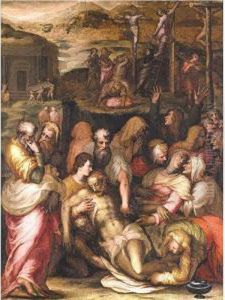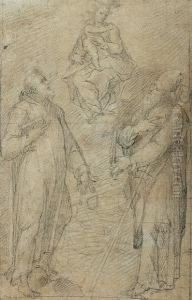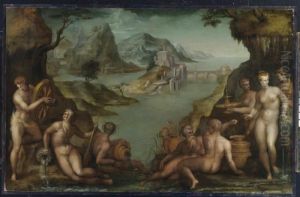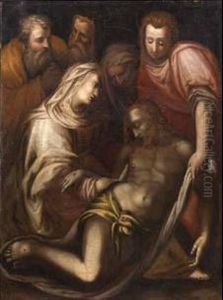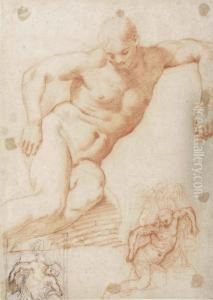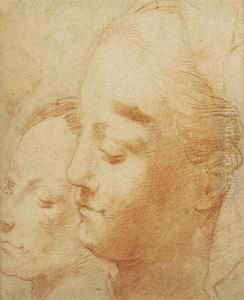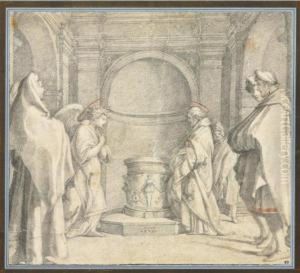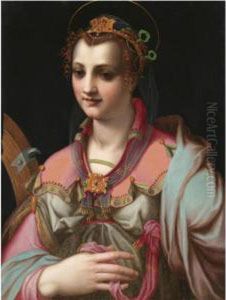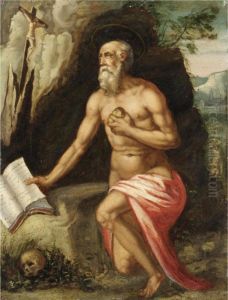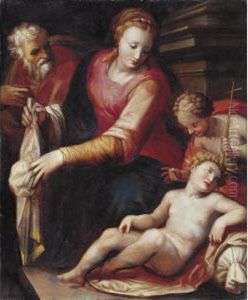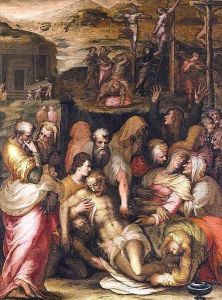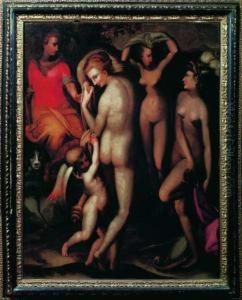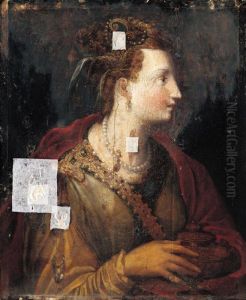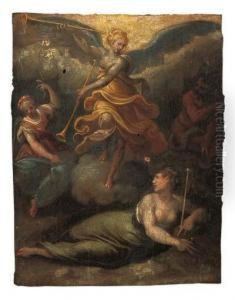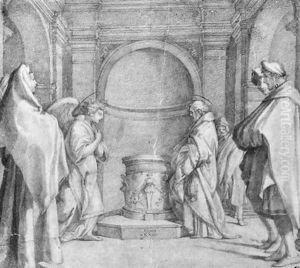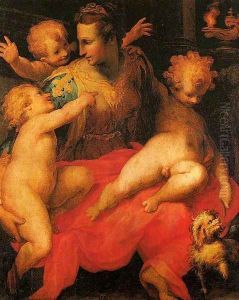Francesco Morandini da Poppi Paintings
Francesco Morandini, commonly known as Francesco da Poppi or Il Poppi, was an Italian painter of the late Renaissance period, active primarily in Florence. Born in 1544 in Poppi, a town in the Casentino area of Tuscany, Morandini showed an early inclination towards the arts. His initial training was likely in Florence, a city that was at the heart of the Renaissance movement, offering a fertile environment for a burgeoning artist.
Morandini's style is noted for its Mannerist qualities, a movement that emerged in the late Renaissance period characterized by artificiality, grace, and an emphasis on using artifice to create harmony and beauty, often through elongated proportions and highly stylized poses. He became a student of Jacopo Pontormo, one of the leading figures of Mannerism, and later, of Agnolo Bronzino, another key Mannerist artist. Under their guidance, Morandini's work developed a distinctive elegance and an emphasis on color and form that reflected his mentors' influence.
Throughout his career, Morandini worked on several important commissions, contributing to the decoration of the Medici Villa at Poggio a Caiano and the Studiolo of Francesco I in the Palazzo Vecchio, Florence. His works often featured religious themes, executed with a refined and sophisticated approach that was typical of the Mannerist style. Among his notable works are the frescoes in the Capponi Chapel in Santa Felicita, Florence, which showcase his skill in creating complex compositions and his ability to convey deep emotional expressions through his figures.
Despite his contributions to the art of the late Renaissance, Francesco Morandini da Poppi is not as widely known as some of his contemporaries. This can be attributed to the overshadowing prominence of artists like Michelangelo, Leonardo da Vinci, and Raphael during the same period. However, Morandini's work remains an important part of the Mannerist movement, reflecting the transition in art from the High Renaissance's naturalism to a more stylized and expressive approach.
Morandini's career was also marked by his role as a teacher, passing on the traditions and techniques of Mannerist painting to the next generation of artists. His influence extended to his son, Filippo Morandini, who also became a painter, albeit with less historical recognition than his father.
Francesco Morandini da Poppi died in 1597 in Florence. Despite the relative obscurity in which he is held today, his contributions during his lifetime added to the richness and diversity of Renaissance art, embodying the complexities and innovations of the Mannerist style that bridged the gap between the Renaissance and the Baroque periods.
